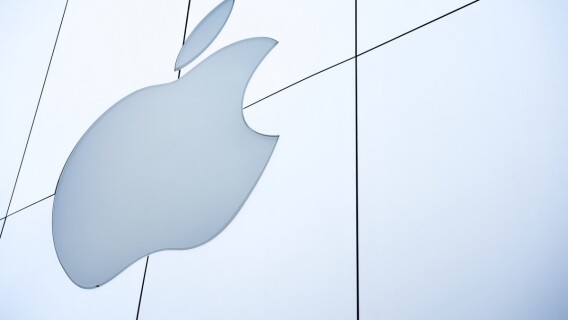Before we dive into streaming stocks, I’d like to share an anecdote. Several years ago, I created an anthology of inventions for a friend’s father who was celebrating his 90th birthday. I included most of the important innovations that had happened in his lifetime. We were both surprised at the number of extraordinary events that had taken place. He was surprised because he had forgotten about many—such as the invention of the radio, the first motorized vehicle, and the airplane. And I, because I was just amazed at how many technological revolutions had occurred in those 90 years.
He has long since passed, but I think about him often. I remember trying to explain how the internet worked to him—we were both frustrated! And now, I think about streaming, and how he might find that quite impossible to understand. And while I’ve read about it, I’ve written about it, and I have a basic understanding of it, still—every time my TV has an interruption of service, I have to call my tech guru friend to help me out.
When I was a child, we had a choice of watching four TV channels—in black and white! And our radio was limited to AM/FM stations. But during my lifetime, technological innovation has been occurring at breakneck speeds, and streaming is a perfect example.
[text_ad]
The cable and satellite companies who ruled the television industry until just a few years ago have lost huge market share to streaming companies. Now, they are playing catchup, offering some competitive products.
I cut the cord a couple of years ago. For me, streaming is less expensive, as I’m not a big TV watcher. I have Roku, Hulu, and Netflix. And I discovered when I was trying to fix a streaming interruption last week that I apparently have access to at least 20 other streaming services, which combined offer viewing of hundreds of channels. Makes you wonder why there’s still not much worth watching, hmm?
You all probably remember dial-up internet, using a modem and wired phone line. And while the internet was invented in the 1960s, most of us didn’t have access until the late ‘80s. The worldwide web was not designed to stream. If you wanted to see a video or listen to an audio file, you had to download it. In downloading, a copy of the entire file is saved onto a device’s hard drive, and the video or audio cannot play until the entire file finishes downloading. I know you remember the little spinning hourglass, buffering, and how so many videos were interrupted midway through!
Streaming revolutionized audio and video. The first live audio streaming event was a game between the Seattle Mariners and New York Yankees, broadcast on September 5, 1995. But connections were still slow, so streaming took a while to catch on.
That has certainly improved. Streaming is the continuous transmission of audio or video files from a server to a client. In simpler terms, streaming is what happens when consumers watch TV or listen to podcasts on internet-connected devices. With streaming, the media file being played on the client device is stored remotely, and is transmitted a few seconds at a time over the internet.
Streaming is real-time, and it’s more efficient than downloading media files. In streaming, the browser plays the video without actually copying and saving it. Instead of the file loading all at once (as in downloading), the video or audio loads a little bit at a time. And the information that the browser loads is not saved locally.
Today, streaming is omnipresent. I honestly don’t know anyone who doesn’t have Netflix! Media research company Nielsen published a study last June, reporting that streamers owned 26% of the TV market, while over-the-air TV owned 25%. Cable, by the way, still has a 39% market share.
There are plenty of streaming companies, like Netflix, Spotify, Pandora, Hulu, and Apple. There are even more content providers, including Paramount, Amazon, and Disney. In some cases, the companies serve both functions. Then there are the companies like Zoom and GotoMeeting, that provide meeting streaming to wide audiences. And don’t forget about the companies that make the devices that plug into your TV or computer that enable streaming—products like Roku, Amazon FireStick, or Google Chromecast.
So you can invest in the industry in many ways. Many of the newer players are not yet public companies. But most have valuable partnerships with some of their larger, more diversified competitors. And some of the most exciting streaming stocks are the larger companies that have been around for many years.
I’ve waded through a bunch of these streaming stock ideas and have narrowed it down to three companies that offer some great investment potential. They are pioneers in their respective fields, and have succeeded over many years by adapting to new technologies.
3 Streaming Stocks to Buy Now
Streaming Stock #1: Netflix, Inc. (NFLX)
Netflix is the granddaddy of streaming. At the end of last quarter, the had 222 million subscribers in over 190 countries, and is still the largest streaming pure play. While domestic subscribers have slowed, the company is making big inroads internationally. It has also become a major player in producing TV shows and movies, which is essential to the company’s growth.
Netflix recently announced that it will join forces with Roald Dahl Story Company (RDSC), continuing their partnership of creating animated TV series, including Matilda, The BFG, Willy Wonka, and many more.
The company’s earnings are expected to grow at an annual pace of 42.61% over the next five years. As for the stock, it came off its recent highs by as much as 48% before bouncing back slightly at the end of January. Like the other hyper-growth stocks on this list, it’s one to watch for signs of a new uptrend.
Streaming Stock #2: fuboTV Inc. (FUBO)
Fubo debuted on public stock markets about two years ago. Its claim to fame is its live TV platform, especially for sports. The company made its entry into sports betting with its late 2020 acquisition of Balto Sports. Then in March of last year, fubo bought sportsbook platform Vigtory.
In October, fubo announced a distribution agreement with ROOT SPORTS to stream its more than 300 live regular-season games of the Seattle Mariners, Seattle Kraken, and Portland Trail Blazers.
The company is now planning a sportsbook app to complement its streaming subscription service. Fubo now offers premium content, interactivity, and integrated wagering.
Given the prevalence of sports wagering options now available in states where it’s legal, that integrated wagering hasn’t done much for the share price as FUBO is down 67% just since it’s last earnings call in November. Of course, high-growth stocks have been struggling since then, but with this stock trading near its IPO price it warrants watching for signs of a rebound.
Streaming Stock #3: Spotify Technology S.A. (SPOT)
In addition to video streaming, music streaming continues to grow at a rapid pace. Their most recent numbers show Spotify’s paid subscriber base hit 172 million, more than tripling since 2017.
Spotify is the leading global streaming company with a 31% share of music streaming, and it’s using its market leadership to broaden its product base, beginning with paid advertising programs to boost new artists, which could become very profitable. The company is also becoming a major podcast player, which analysts anticipate will give it more leverage in its negotiations on royalties with the major record labels.
Spotify also has amazing growth potential, with Wall Street expecting its 5-year earnings to rise by 137.8% annually, although the stock has been dragged down lately by market conditions and disputes over content.
These three streaming companies seem to have all the right elements to continue taking market share. However, their stocks are volatile, so make sure you set your stop-loss triggers when you purchase them. For most investors, that stop-loss should be about 30%.
Do you own any streaming stocks in your portfolio?
[author_ad]
*This post has been updated from an original version, published in 2019.

